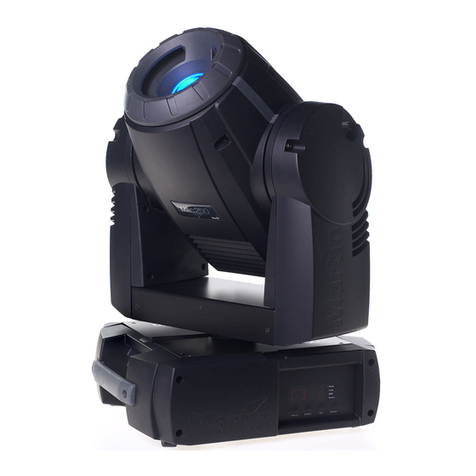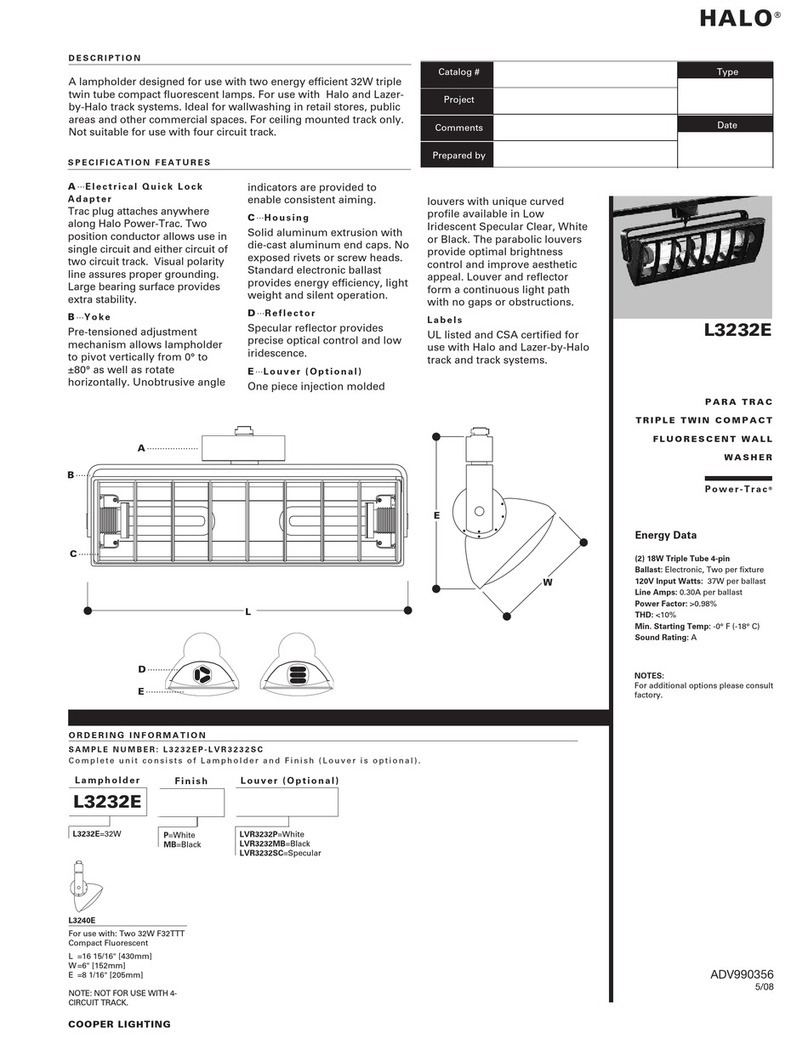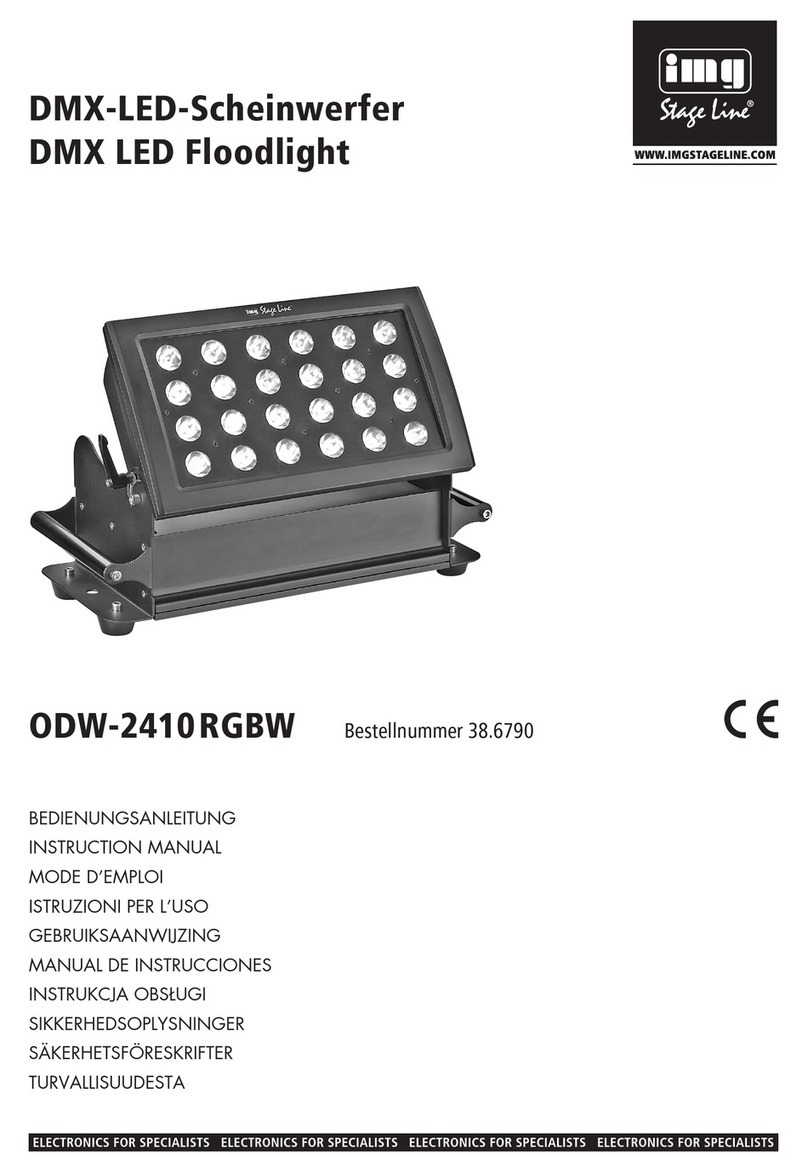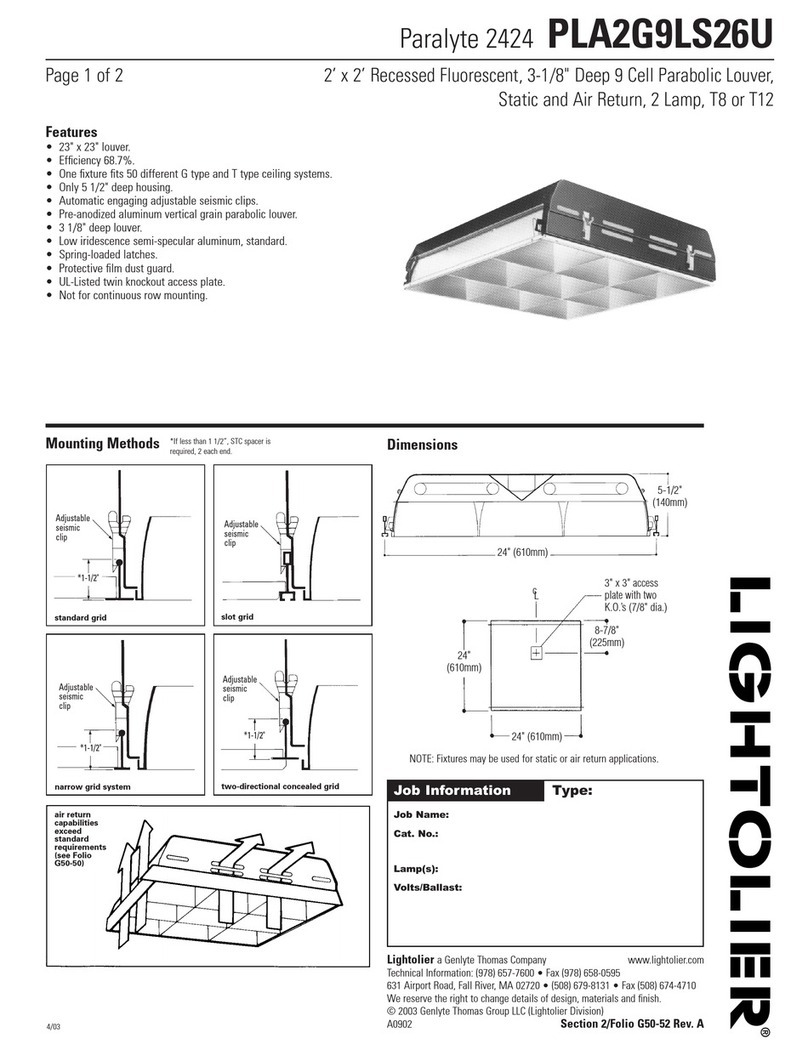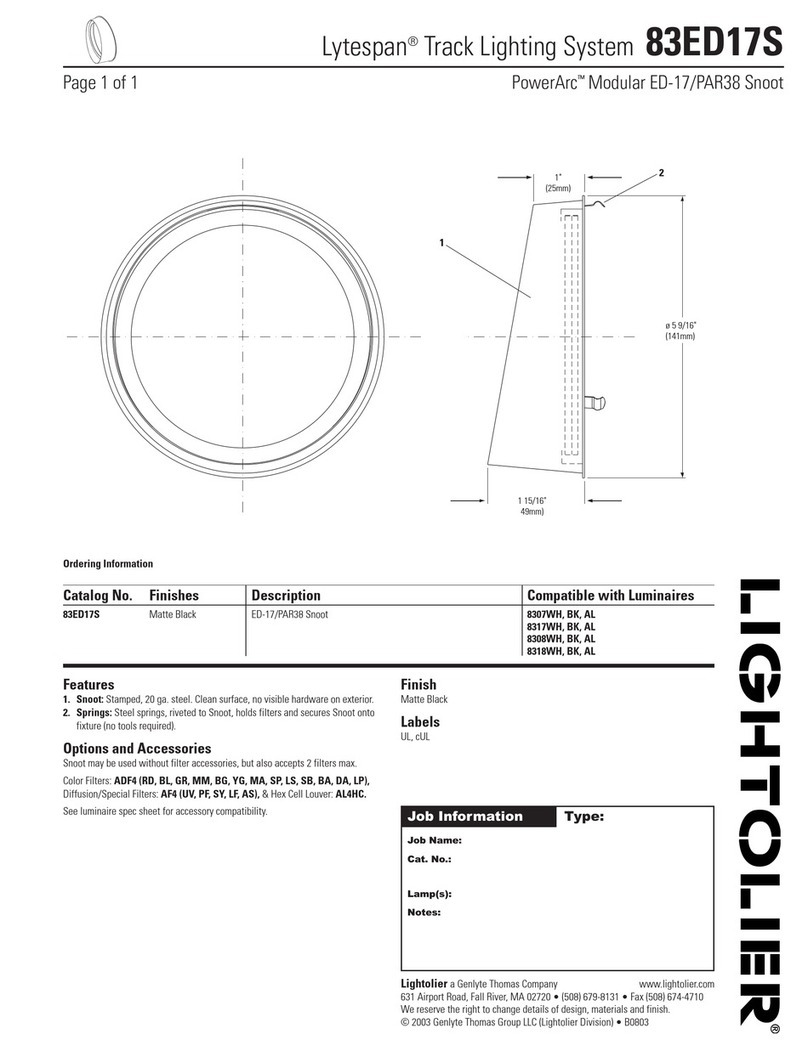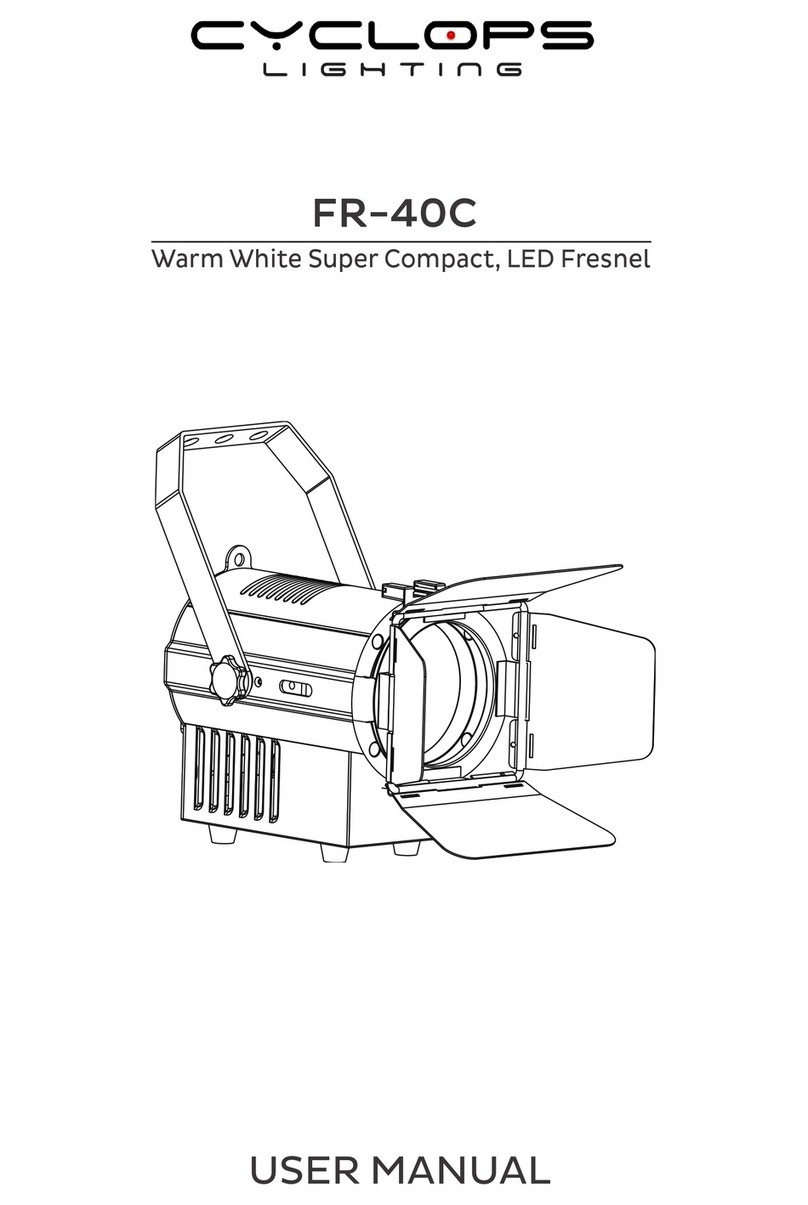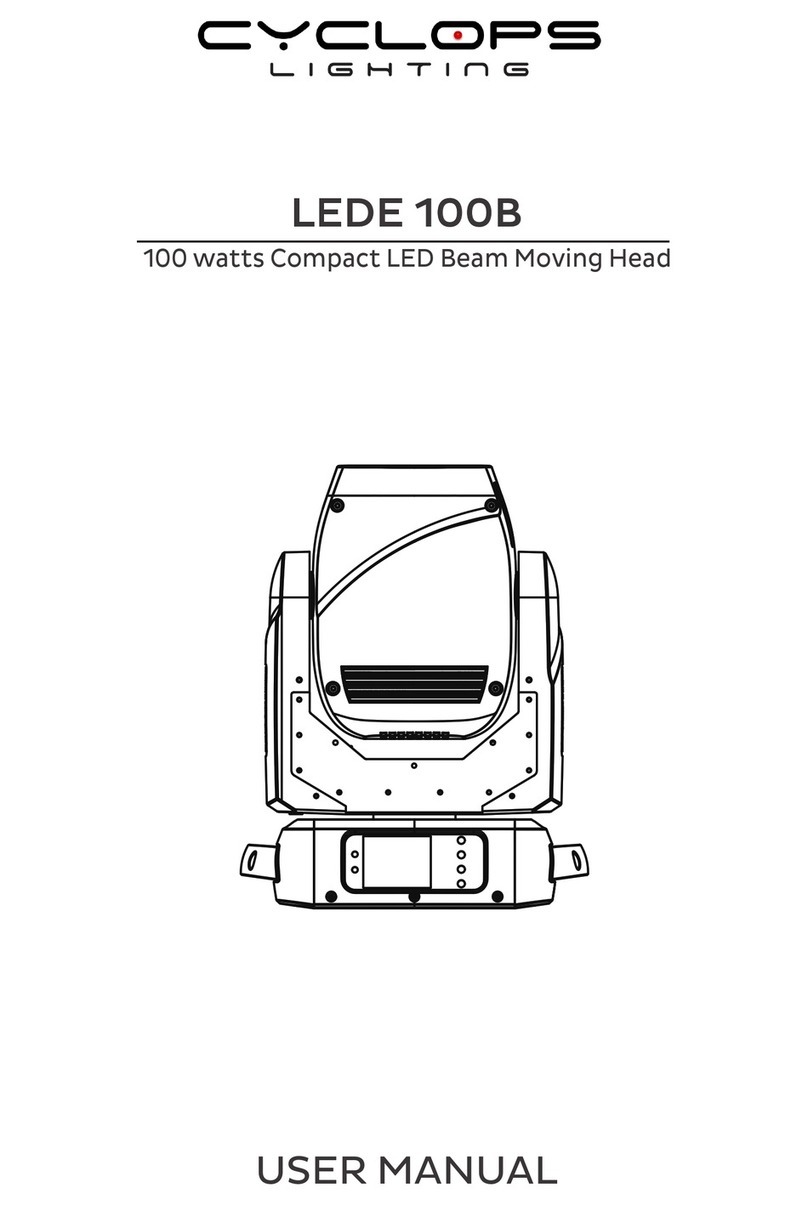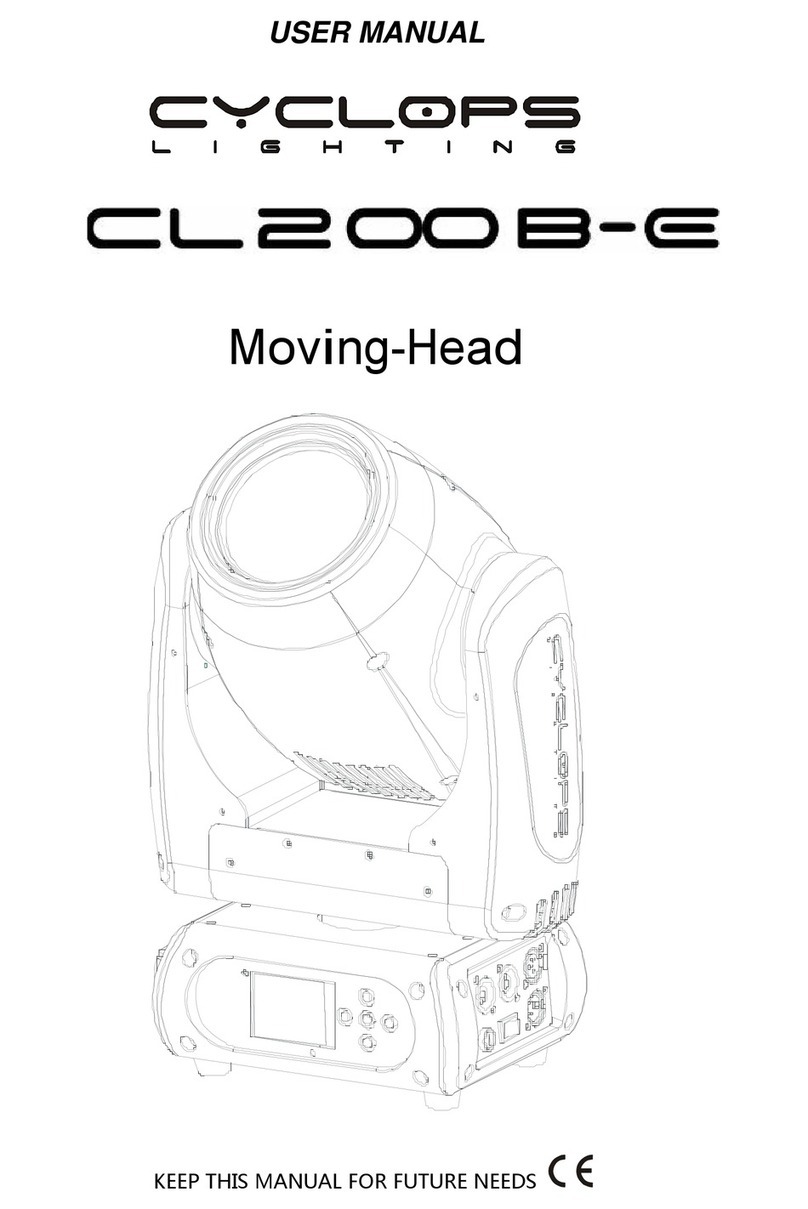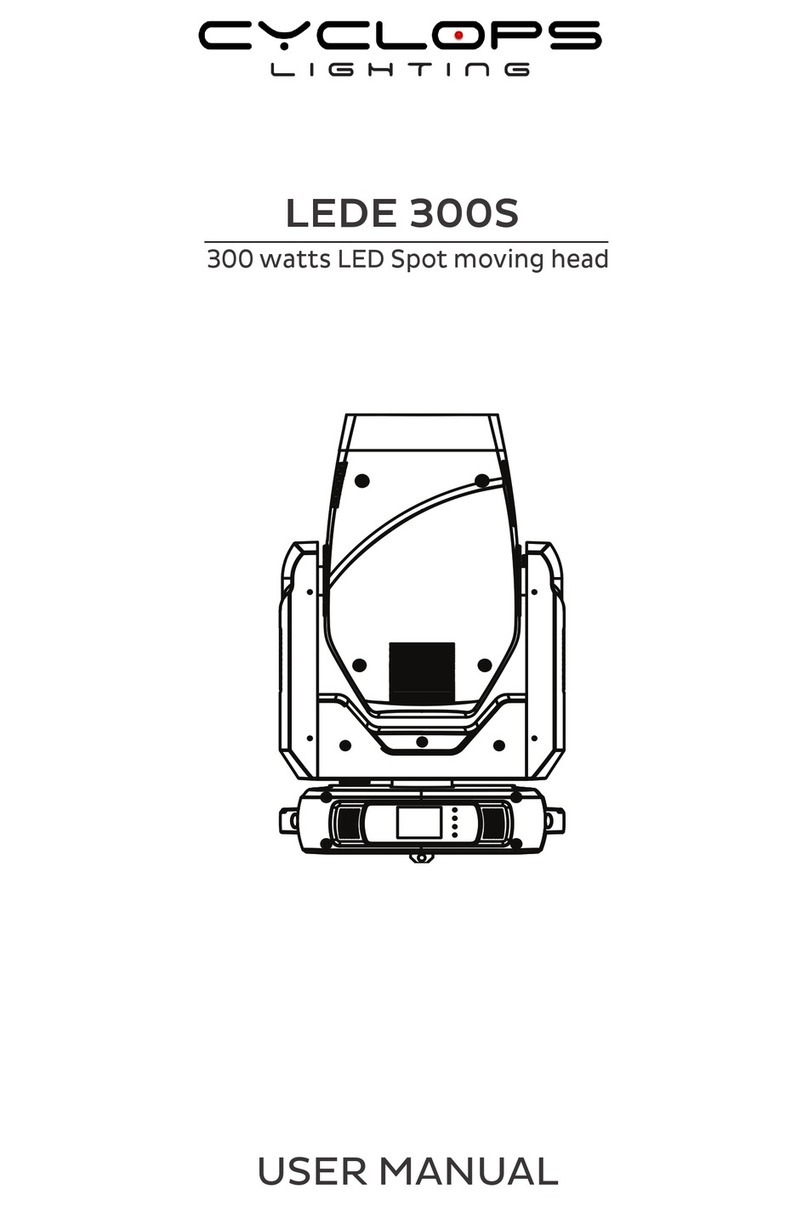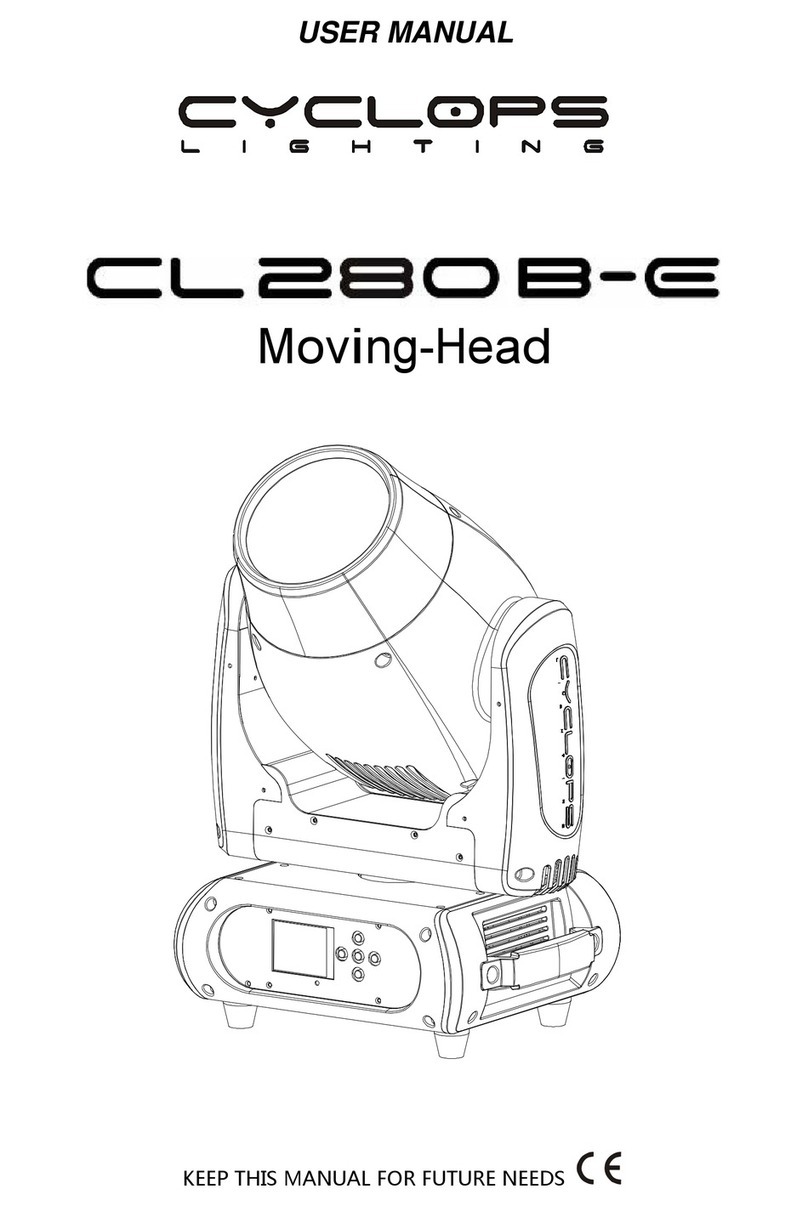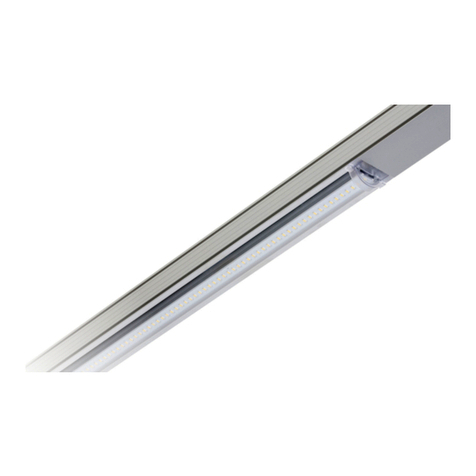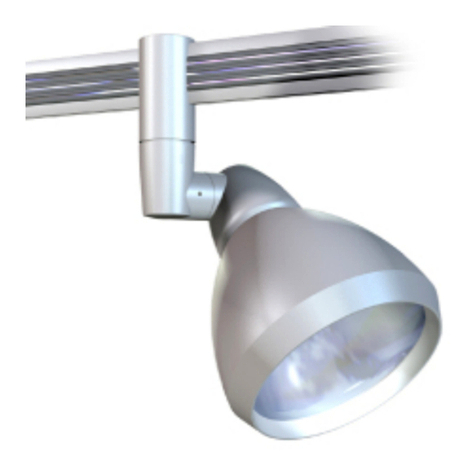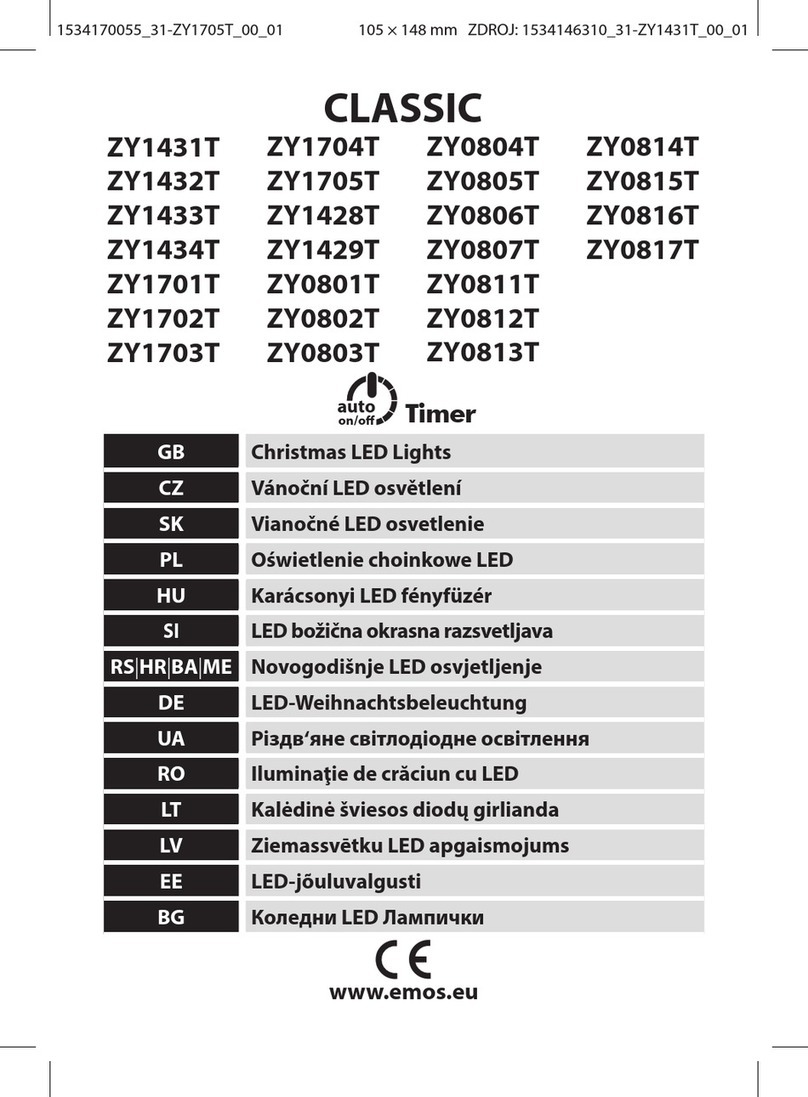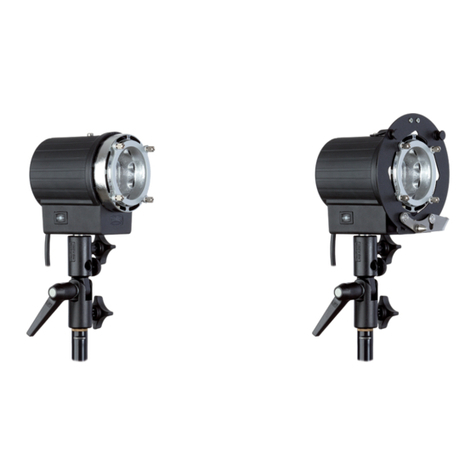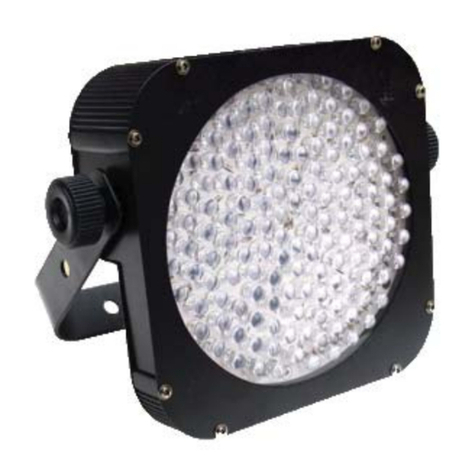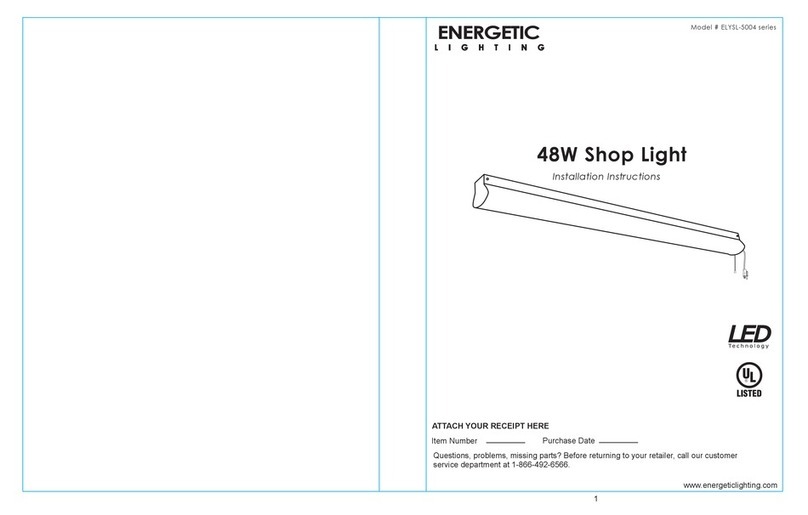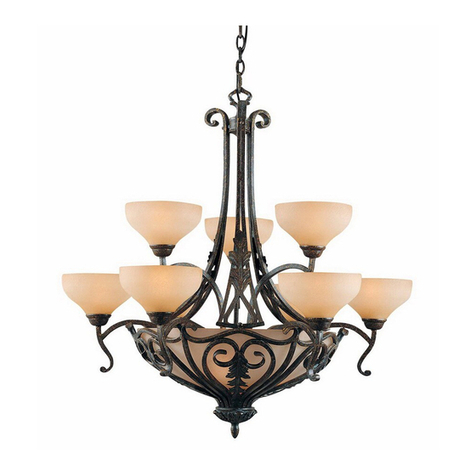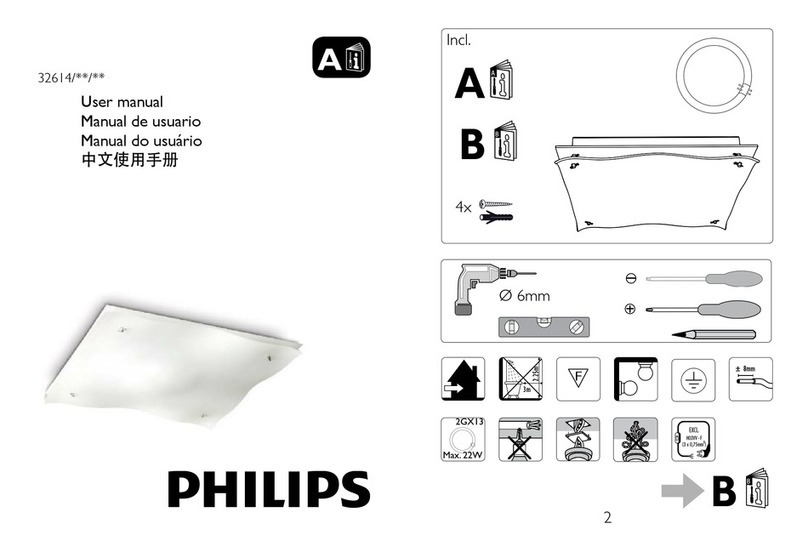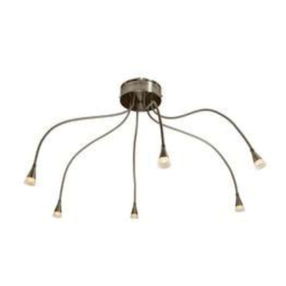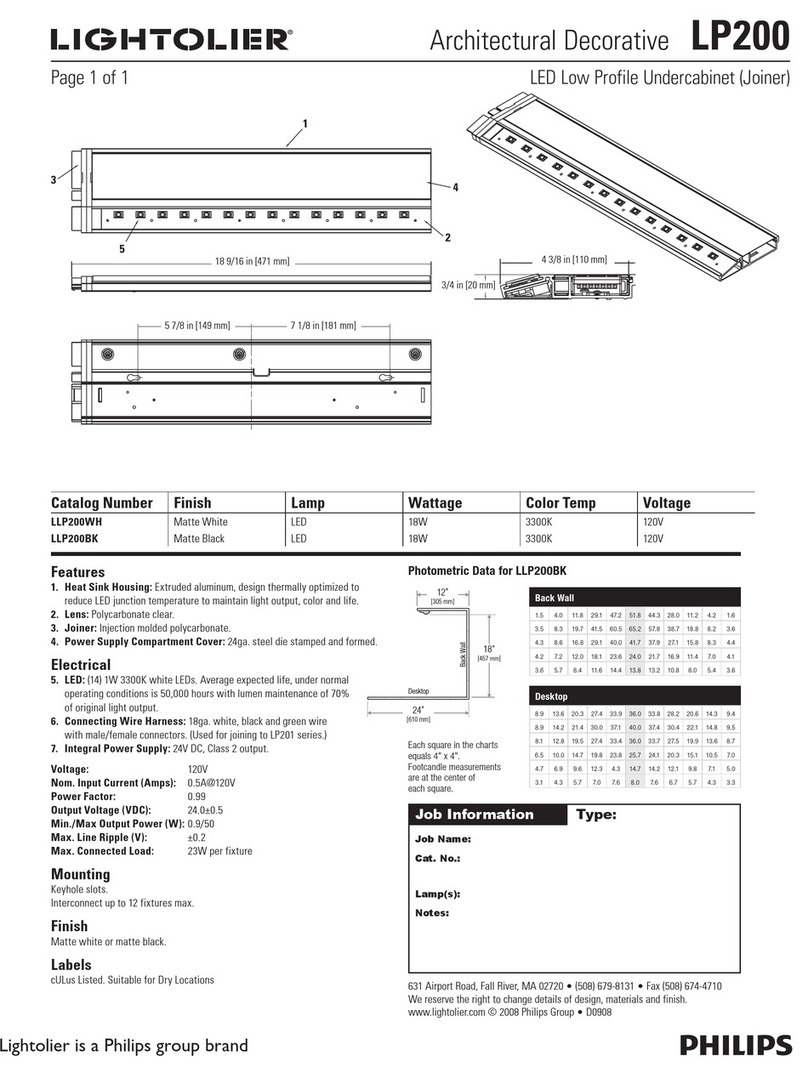
7Version 2.0
2� Select the Fixture Set tab�
3� Press Up or Down button and select Run Mode and select Host�
4� The fixture will run internal programs�
Master-Slave Operation
This function will allow you to link up to 16 units together and operate without a controller� In a Master-
Slave set up one unit will act as the controlling unit and the others will react to the controlling units
programs� Any unit can act as a Master or as a Slave�
1� Using approved DMX data cables, daisy chain your units together via the XLR connector on the rear
of the units�
2� For the Master unit press the Setting - Fixture set - Run Mode - Host icon in in the touch screen�
3� For the slave units press the DMX address icon in the touch screen� Set the DMX address to 001�
4� The slave units will now follow the Master unit�
Control Menu Map
The control panel on the front of the fixture,
provides access to the system menu and is where
all necessary system adjustments are made to the
fixture� LCD touch screen makes it very easy to
navigate the system menus�
During normal operation, pressing MENU button
once will access the fixture’s main menu�
Once in the main menu you can navigate through
the different functions and access the sub-menus with the UP, DOWN, and ENTER buttons�
Once you reach a field that requires adjusting, press the ENTER button to activate that field and use
the UP and DOWN buttons to adjust the field� Pressing the ENTER button once more will confirm your
setting�
You may exit the main menu at any time without making any adjustments by pressing the MENU button�
Default settings=bold print
Main Menu Level 1 Level 2 Level 3 Function
Setting
DMX address 001-512 DMX address setting
Fixture set
DMX Mode STD Channel mode, standard - 19CH
EXT Channel mode, simplified - 24CH
Run Mode
DMX Control mode, DMX
Sound Control mode, sound activate
Auto Control mode, auto programs
Pan Inverse Close Pan reverse movement
Open
Tilt Inverse Close Tilt reverse movement
Open
Fan Mode
Normal Fan mode off, max output
Quiet Fan mode 1, less power
Studio Fan mode 2, even less power, super silent

